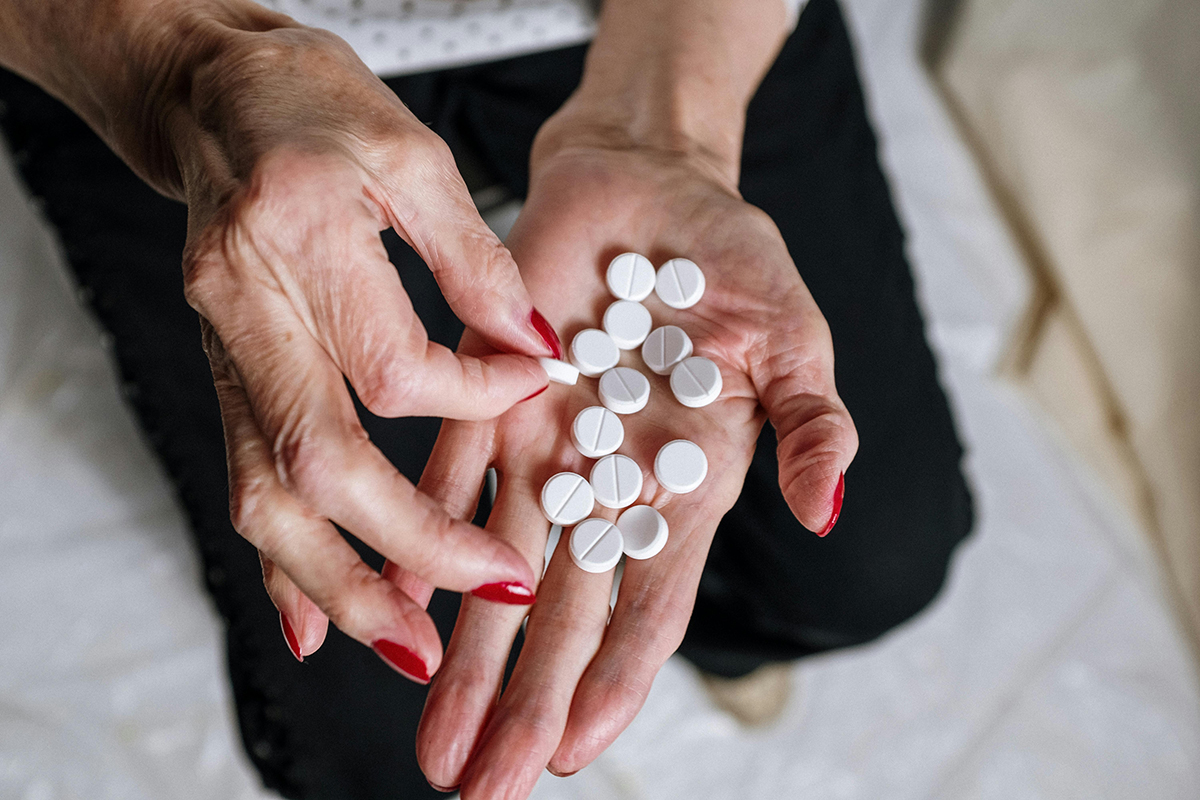Often patients come to see me because they are having symptoms that are making them feel terrible. But recently, more women have come to see me not because they are having symptoms, but because they have heard that hormone therapy may prevent some types of chronic illness as they age.
One of my new patients falls into this category. She is in her early 50s and hasn’t had a period for two years. She told me she was overall feeling pretty good but wanted to know if she should preventatively start hormone therapy just because she was in menopause.
She was particularly worried about heart disease and stroke. She had a family history of cardiovascular disease (CVD) and she had heard that perhaps hormone therapy could help reduce her own risk.
The concern about the link between menopause and cardiovascular disease is a common one, and this link has a complicated history.
How are estrogen and cardiovascular disease linked?
The link between estrogen and cardiovascular disease started with a few observations. The first is that while women are at risk for cardiovascular disease, they develop clinically significant signs and symptoms later than men. In fact, women develop cardiovascular disease about 10 years later than men, which is coincidentally also about 10 years after menopause.

Doctors also observed that women who experienced primary ovarian insufficiency — that is, menopause before age 40 — and early menopause — menopause before age 45 — are at increased risk of developing cardiovascular disease, and at an earlier age. This suggests that the drop in estrogen that women experience after menopause contributes to the development of cardiovascular disease.
Additionally, researchers noted that estrogen lowers low-density lipoprotein (LDL) cholesterol, or “bad cholesterol,” and increases high-density lipoprotein (HDL) cholesterol, or “good cholesterol.” Low LDL and high HDL have been associated with a decreased risk for cardiovascular disease. Given all this evidence, they hypothesized that treating women with estrogen after menopause would reduce the risk of cardiovascular disease.
How this concern relates to the Women’s Health Initiative
The Women’s Health Initiative study (WHI) was designed in part to test the hypothesis that hormone therapy would reduce a woman’s risk of cardiovascular disease. When the WHI was ended early, the headlines focused on increased breast cancer risk, but it was the increase in cardiovascular disease that was the unexpected finding.
The initial publication from the WHI reported an increase in heart disease of 30% and an increase in stroke of 40% among the women taking hormone therapy compared with those taking a placebo. Scientists immediately started trying to figure out why their hypothesis about hormone therapy seemed to be so wrong.
They had two ideas. First, as I have discussed in previous articles, the women enrolled in the WHI were on average many years into menopause. Reintroducing estrogen after more than a decade of menopause might have played a role in the uptick in cardiovascular disease. Additionally, the WHI used Prempro — a combination of conjugated equine estrogen and medroxyprogesterone — which is biochemically different from the estrogen and progesterone women’s bodies make. Perhaps that caused the unexpected findings.
Does hormone therapy prevent CVD?
In the more than 20 years since the WHI was stopped, researchers have rehashed old data and collected new data to try to understand whether hormone therapy affects a woman’s risk of cardiovascular disease and, if so, how.
This review does a good job of summarizing that data. The first piece of conflicting data again comes from the WHI. While one arm of the study looked at women taking combination estrogen and progesterone, a second arm of the study looked at women who had had a hysterectomy and took estrogen only. Those women did not have an increased risk of heart disease, but they did have an increased risk of stroke compared with women with hysterectomy taking a placebo.
Additional subanalyses of the WHI combined data from both arms and found that women closer to the typical age of natural menopause had a lower risk of cardiovascular disease than those who were further from the typical age of menopause. This supports the idea that it was the age of the participants in the WHI that led to the unexpected increase in cardiovascular disease among women taking hormone therapy.
HERS, a study of hormone therapy in women who had already had a cardiovascular event, showed no difference in subsequent cardiovascular events among women who took hormone therapy compared with women who took a placebo.
Another study looked more closely at the “timing hypothesis,” the idea that women who are nearer to menopause are more likely to benefit from estrogen to prevent cardiovascular disease compared with women who are further beyond menopause. However, in an attempt to design a trial with shorter follow-up, the researchers used a surrogate marker of cardiovascular disease called carotid intima-media thickness (CIMT). This is essentially an ultrasound that looks for early signs of cardiovascular disease in the arteries in the neck. They found no difference in CIMT between the groups given hormone therapy early in menopause compared with the groups given hormone therapy late in menopause.
Additional studies have looked at different formulations of estrogen, including oral estradiol, transdermal estradiol, and a variety of progestins and progesterone. On the whole, they consistently suggest that oral estrogens may increase blood clots in the veins but not cardiovascular disease. Transdermal estrogen is not associated with blood clots or cardiovascular disease. But none of the studies individually or taken together demonstrate definitively that estrogen reduces cardiovascular risk.
How I implement this data in my practice
Based on this data, I take a moderate approach to hormone therapy. Certainly, if a woman is experiencing symptoms of perimenopause, there is nothing in the evidence regarding hormone therapy and cardiovascular disease that would give me pause about treating her symptoms, particularly with transdermal estradiol. On the other hand, I see nothing in the data that convinces me that hormone therapy reduces cardiovascular risk.
The bottom line
- Estrogen increases good cholesterol and decreases bad cholesterol. Women who have primary ovarian insufficiency or early menopause are at increased risk of developing cardiovascular disease.
- Despite reports from the Women’s Health Initiative, hormone therapy has not been shown to increase the risk of cardiovascular disease in subsequent analyses and clinical trials.
- However, there is also no definitive data that estrogen reduces the risk of cardiovascular disease.




















Log in